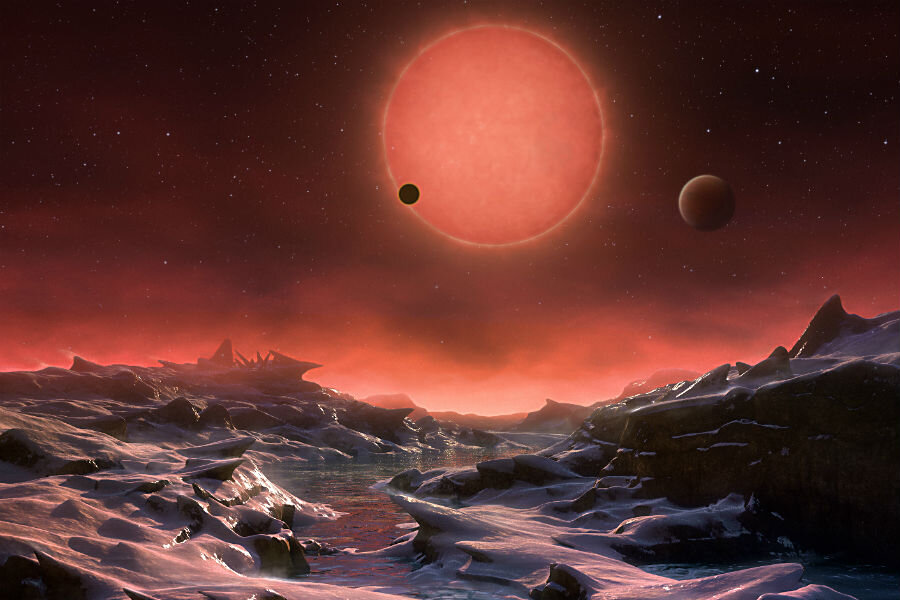Could these three Earth-like exoplanets be capable of sustaining life?
Loading...
A set of three exoplanets with similar characteristics to Earth have been discovered by astronomers, who say the new worlds may be ideal sites to investigate for signs of life outside of the solar system.
Scientists from the Université de Liège, NASA, and other astronomical study centers, released their findings in Nature on Monday.
"These planets are Earth-sized, they are temperate – we can't rule out the fact that they are habitable – and they are well-suited for atmospheric studies," Massachusetts Institute of Technology researcher Julien de Wit told NPR.
More than 1,000 exoplanets, planetary bodies orbiting a star other than the Sun, have been located outside of our system, many thanks to the work of the Kepler space telescope, now repurposed as the K2 Second Light mission. Kepler is responsible for the recent discovery of other potentially habitable exoplanets in their star's "Goldilocks zone," or circumstellar habitable zone (CHZ), the range around a stellar object within which a planet could support life.
"This really is a paradigm shift with regards to the planet population and the path towards finding life in the Universe," study co-author Emmanuël Jehin said in a European Southern Observatory release. "So far, the existence of such 'red worlds' orbiting ultra-cool dwarf stars was purely theoretical, but now we have not just one lonely planet around such a faint red star but a complete system of three planets!"
The researchers behind the latest discovery utilized the Belgian Transiting Planets and Planetesimals Small Telescope (TRAPPIST) at La Silla Observatory in the Coquimbo region of Chile to obtain evidence of the extrasolar system. Using the TRAPPIST, the research team led by Liège's Michaël Gillon and Mr. Jehin were able to track the transits of the new planets around the ultra-cool dwarf star TRAPPIST-1. That star is only 8 percent the mass of the Sun, with a radius around 11 percent that of the solar system's central energy source, making it only slightly larger than Jupiter.
TRAPPIST-1 and its three Earth-sized satellites, TRAPPIST-1b, TRAPPIST-1c, and TRAPPIST-1d, are located around 40 light-years from Earth, a far cry closer than most other bodies potentially within their stars' CHZs. That distance and the TRAPPIST planets' attributes make them "the only places where we can detect life on an Earth-sized exoplanet with our current technology," according to Mr. Gillon.
"So if we want to find life elsewhere in the Universe, this is where we should start to look," he said.
TRAPPIST-1b and TRAPPIST-1c were found to have orbits lasting 1.51 and 2.42 Earth days, respectively, while TRAPPIST-1d's orbital period could last anywhere from 4.5 to nearly 73 Earth days. The scientists also noted that, although unlikely, the signature left by -1d could be attributed to two separate planets' transits. Those orbit times and the planets' distances from their star, coupled with TRAPPIST-1's small size, are what have scientists excited about the possibility of further observing the newfound system for signs of life.
"They're all pretty darn interesting," study participant and NASA astrophysicist Marc Kuchner said to NPR, who said the TRAPPIST bodies are each "another compelling example of a planet that we really ought to spend some quality time getting to know."
"These planets are so close, and their star so small, we can study their atmosphere and composition, and further down the road, which is within our generation, assess if they are actually inhabited," Mr. de Wit said, according to Phys.org. "All of these things are achievable, and within reach now. This is a jackpot for the field."








